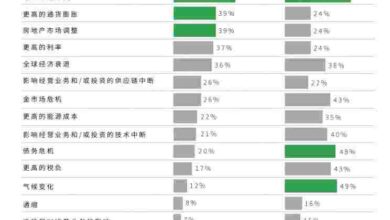Crafting the Essence: The Art of Company Logo Design

Introduction:
In the bustling landscape of business, a company logo design serves as the face of an organization, encapsulating its identity, values, and aspirations. The creation of a logo is not merely an exercise in graphic design; it is a profound synthesis of creativity, strategy, and communication. This article delves into the intricate process of logo design, exploring the essential elements and considerations that contribute to crafting a memorable and impactful emblem.
Understanding Brand Identity:
At the heart of every successful logo lies a deep understanding of the brand it represents. Before putting pen to paper or cursor to screen, designers embark on a journey to unravel the essence of the company – its mission, vision, target audience, and unique selling propositions. This foundational understanding forms the bedrock upon which the logo design process unfolds. Whether it’s a playful symbol for a children’s toy company or a sleek, minimalist emblem for a tech startup, the logo must resonate with the brand’s identity and evoke the desired emotions in its audience.
Embracing Simplicity:
In the age of information overload, simplicity reigns supreme. A well-crafted logo distills complex ideas into a simple yet powerful visual language. From the iconic swoosh of Nike to the bitten apple of Apple Inc., the most enduring logos are often the most straightforward. By stripping away extraneous elements and focusing on clarity and coherence, designers ensure that the logo leaves a lasting impression and remains instantly recognizable across various platforms and scales.
Harnessing Symbolism and Metaphor:
Beyond mere aesthetics, logos possess the remarkable ability to convey layers of meaning through symbolism and metaphor. Every line, shape, and color choice is imbued with significance, subtly communicating the company’s values, culture, and aspirations. Whether drawing inspiration from nature, mythology, or cultural heritage, designers weave intricate narratives into seemingly simple forms, fostering deeper connections with the audience. A well-executed logo transcends its visual representation, becoming a powerful emblem of the brand’s ethos and identity.
Balancing Tradition and Innovation:
In the ever-evolving landscape of design, striking the right balance between tradition and innovation is paramount. While honoring established design principles and industry conventions, designers must also push the boundaries of creativity and experimentation to create logos that stand out in a crowded marketplace. By marrying timeless elegance with cutting-edge techniques, they breathe new life into age-old symbols, ensuring that the logo remains relevant and resonant in an increasingly dynamic world.
Iterative Process and Collaboration:
Contrary to popular belief, logo design is rarely a linear journey from concept to completion. Instead, it is an iterative process marked by exploration, experimentation, and refinement. Designers collaborate closely with clients, soliciting feedback and insights at every stage to ensure that the final product aligns seamlessly with the brand’s vision and objectives. Through this iterative approach, logos evolve from rough sketches to polished masterpieces, embodying the collective wisdom and creativity of all involved.
Conclusion:
In the realm of business, a well-designed logo is more than just a visual asset; it is a powerful symbol that encapsulates the essence of a brand and leaves a lasting impression on its audience. From the initial spark of inspiration to the final flourish of refinement, the process of logo design is a testament to the power of creativity, strategy, and collaboration. By understanding the intricacies of brand identity, embracing simplicity, harnessing symbolism, balancing tradition and innovation, and embracing collaboration, designers can craft logos that not only captivate the eye but also resonate deeply with the heart and mind.



